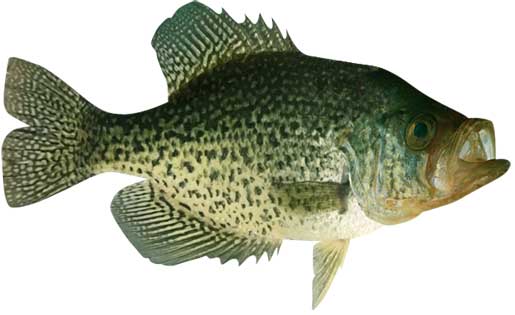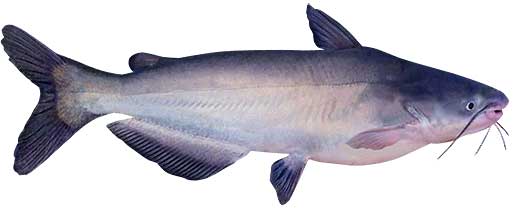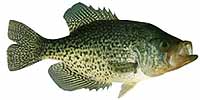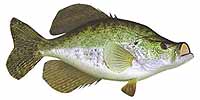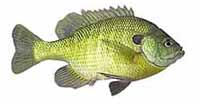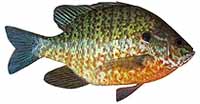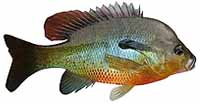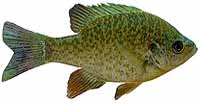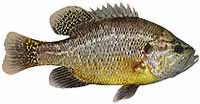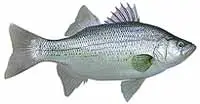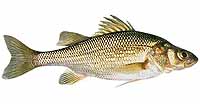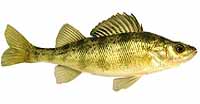Fishing Report For Lake Marion, SC
AKA: Marion Reservoir
By Rick Seaman
Last updated on .
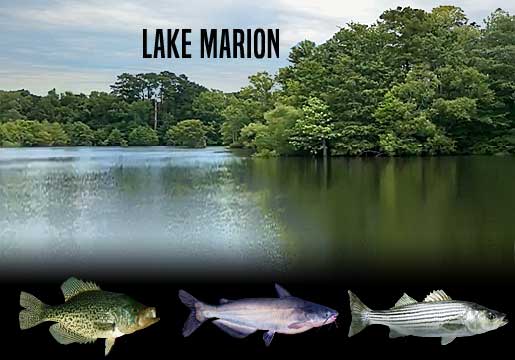
Fishing Reports
Popular Fish Species Lake Marion, SC
Black Crappie
Current Report: Good
FALL. Baitfish, which are moving into shallow flats, coves and bays, are drawing crappie into these areas. They are feeding heavily in preparation for the cold Winter, in 10 to 18 feet of water. Minnows, hair jigs, and crappie jigs, are good options during this feeding marathon. Late fall starts the migration deeper, toward winter holding areas, for both crappie and baitfish. Small flutter spoons, fished in 15 to 25 feet of water, are a good option during this transition
WINTER. Anglers can fish for crappie year round in Lake Marion. Once the shallows start cooling rapidly, crappie will migrate to deeper holding areas, mostly off shore. At this time they are typically caught using a very slow presentation, in 25 to 35 feet of water. If they are suspending in open water, they often relate to some cover, or structure change, directly below them.
SPRING. The SC Department of Natural Resources reports the best fishing is from Spring to early Fall. In early Spring, crappie begin staging in 4 to 8 feet of water, just outside spawning bays and shallow flats. Spring is prime time to be on the water, as crappie have moved shallow to spawn. At that time, they are typically caught in 2 to 4 feet of water. Vegetation, docks, brush and wood are where most anglers catch crappie using small crappie jigs or live minnows. After the spawn, crappie typically move outside the spawning area and hold on cover close by, in 12 to 15 feet of water. Once they move deep, anglers report success using fish finders and forward facing sonar to locate schools of crappie, which tend to stack vertically around cover. Light tackle, with 4 lb to 8 lb line, is a popular choice.
SUMMER. Water temperatures warm, and crappie fishing is usually pretty good. Now that the spawn is over, and the hot Summer sun is warming the shallows, crappie have retreated to depths of 12 to 20 feet, or embedded in the shade of slightly shallower vegetation. This is a good time to focus around bridge pilings and deeper docks. Anglers are also locating schools of crappie hanging over deep structure and around creek channel edges.
Blue Catfish

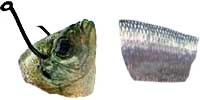
Current Report: Good To Very Good
FALL. Fall is one of the better times of year for catching blue catfish. Early in Fall they cruise the shallows, in search of food. Later, in the season they migrate away from the shallows and current, to moderately deeper holes in the main body of the lake, around 15 to 25 feet deep. They remain in these areas and feed aggressively in preparation for Winter.
WINTER. In Winter, focus on deep holes, in 25 to 35 feet deep, where blue catfish wait through the cold water season. They are less aggressive now, but slow drifting, or dead sticking baits, can still trigger bites. Cut bait, or live bait taken from this lake are the top bait choice. Use slip sinkers, 3-way rigs, or Carolina rigs with enough weight to keep the bait bumping bottom as you drift or slow troll.
SPRING. Although there is a strict limit on blue catfish here, locals report that fishing for blues is quite good - especially in early Spring. The arrival of Spring begins the aggressive feeding in preparation for winter. Blues at this time are being caught 10 to 20 feet deep in bays, on flats where baitfish school, and shallow ledges. Cut bait is the ideal bait this time of year, with locals preferring cut herring.
SUMMER. Early Summer is post-spawn season for big blue catfish. They follow big schools of baitfish, and feed heartily. Live shad is the preferred bait at night, while cut bait is catching nice blues during the day. Stay around channel edges and fish areas that have concentrations of bait in 20 to 30 feet of water. Once Summer weather has warmed lake water above the 70's, blue catfish move closer to the main lake, to deeper feeding areas, still preferring to remain in current when available. Blues, including some of the bigger ones, are now being caught while slow trolling, or drifting ledges, adjacent to river channels, or within the channel along the edges. The lake record here is over 100 pounds, and big blues, 25 to 70 pounds, are regularly caught. Anglers fishing from the bank are catching a few fish, but boats are the preferred approach. Late Summer, if the water temperature rises above the high 70's, they become less active, and fishing can slow down.
Striped Bass
Current Report: Fair To Good
FALL. In Fall, stripers are drawn back to the shallows, as well as the upper end of the lake into any inflowing water. October delivers some excellent striper fishing in 15 to 25 feet of water. Seek out deeper sections in the upper river channels, and fish them thoroughly.
WINTER. In Winter, stripers again hang out in deeper water and feed close to the bottom. Warm, sunny afternoons occasionally draw stripers shallow. Otherwise they hang out around 20 or 35 feet deep as they feed on roaming schools of threadfin shad and gizzard shad. Locate schools of bait, then look for stripers close by. Fish finders, and forward facing sonar, are a big help in locating these roaming schools. Nice stripers are caught while drift fishing with live bait or cut bait. Spoons, blade baits, and heavy hair jigs are also effective this time of year. Due to the stripers slower metabolism this time of year, anglers are triggering more strikes by working baits more slowly.
SPRING. April and May are premiere months for stripers here. Water temperatures are return to the mid 60's, and that's ideal for the stripers to spawn. In Spring, work the upper end of the lake, and the backs of coves, where there is inflowing water. If they spawn, this is where they will lay eggs in the moving water. They also move into transition zones on the main lake, feeding on baitfish which are moving into the shallows. Expect to locate them on ledges, flats or points in 10 to 20 feet of water.
SUMMER. Striper season is closed from June to August.
Fishing Video
Fish species to fish for...
Guide to fishing for largemouth bass, channel catfish, flathead catfish, blue catfish, black crappie, white crappie, bluegill, pumpkinseed sunfish, redbreast sunfish, redear sunfish, warmouth, white bass, white perch, yellow perch, striped bass and chain pickerel at Lake Marion in South Carolina.
 The largest lake in South Carolina, Lake Marion is the upper lake in the Santee Cooper Reservoir System. Excellent fishing opportunities abound at this 110,000-acre lake in the central part of the state, at Santee. Over 300 miles of shoreline entice fishing enthusiasts to wet a line most every where you look.
The largest lake in South Carolina, Lake Marion is the upper lake in the Santee Cooper Reservoir System. Excellent fishing opportunities abound at this 110,000-acre lake in the central part of the state, at Santee. Over 300 miles of shoreline entice fishing enthusiasts to wet a line most every where you look.
Primary fish species residing in Lake Marion
Click images for fishing tips and details about each species.
Today's Weather & Forecast
Fishing Boat Rentals
Click here for fishing boat rentals.
Public Boat Launch Ramps & Landings
Click here for boat ramps.
Marinas
Click here for marinas.
Fishing License
Click here for a South Carolina Fishing License.
Map - Fishing & Access
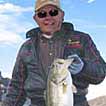 Rick Seaman is a fishing enthusiast with over five decades of fishing experience, a retired tournament fisherman, author of numerous published articles on fishing, and co-author of the book "Bass Fishing - It's not WHAT you throw, It's WHERE you throw it".
Rick Seaman is a fishing enthusiast with over five decades of fishing experience, a retired tournament fisherman, author of numerous published articles on fishing, and co-author of the book "Bass Fishing - It's not WHAT you throw, It's WHERE you throw it".
 Contact Information
Contact Information
SC Department of Natural Resources
1000 Assembly Street
Columbia, SC 29201
803 737-8483
Fishing lakes in each state
100725
Lake Marion, South Carolina Report
SOUTH CAROLINA


Information about fishing lakes in SC
Go fishing at Lake Marion to catch bass, catfish, shellcrackers, crappie, perch, stripers, white bass, sunfish and chain pickerel in central South Carolina.


